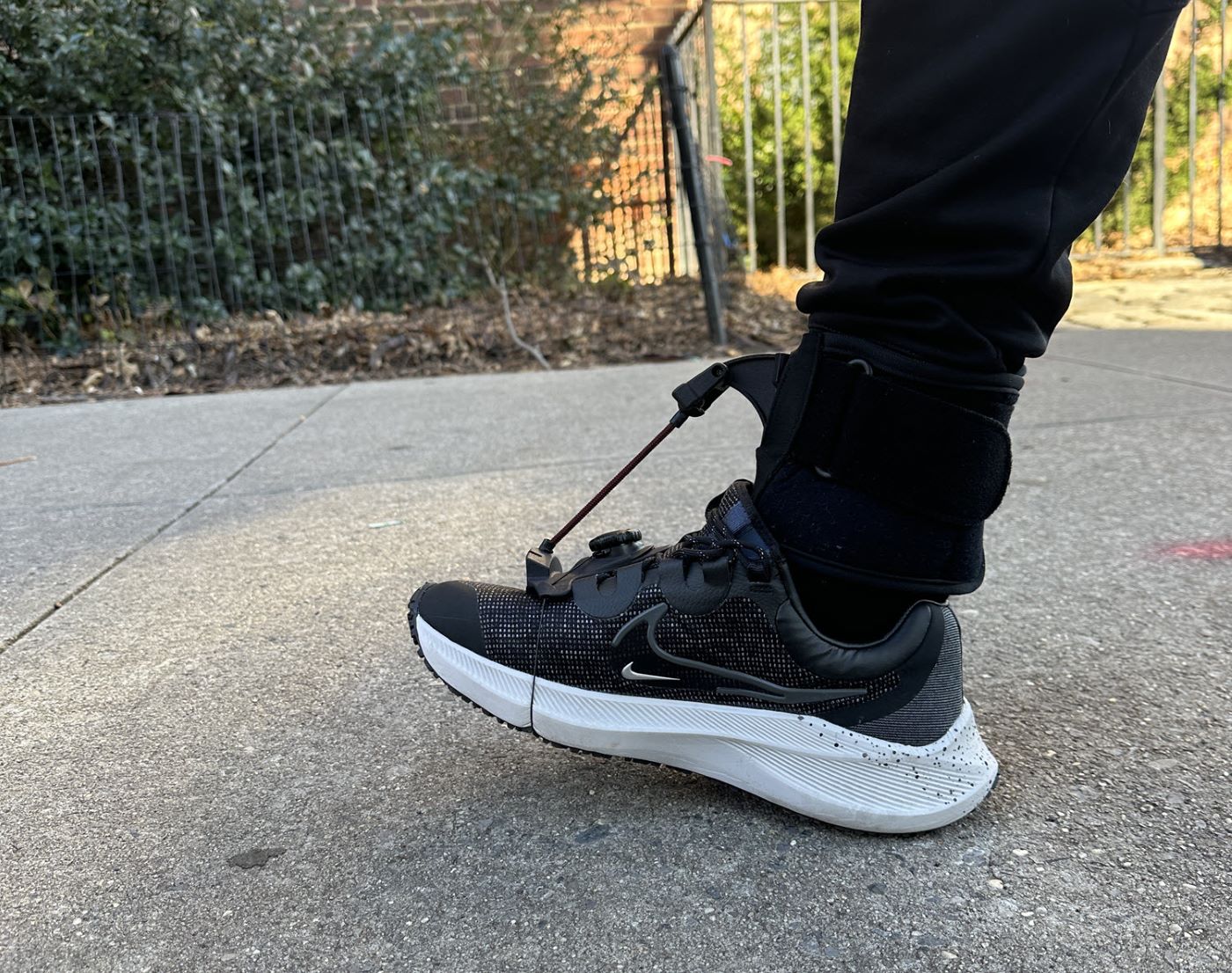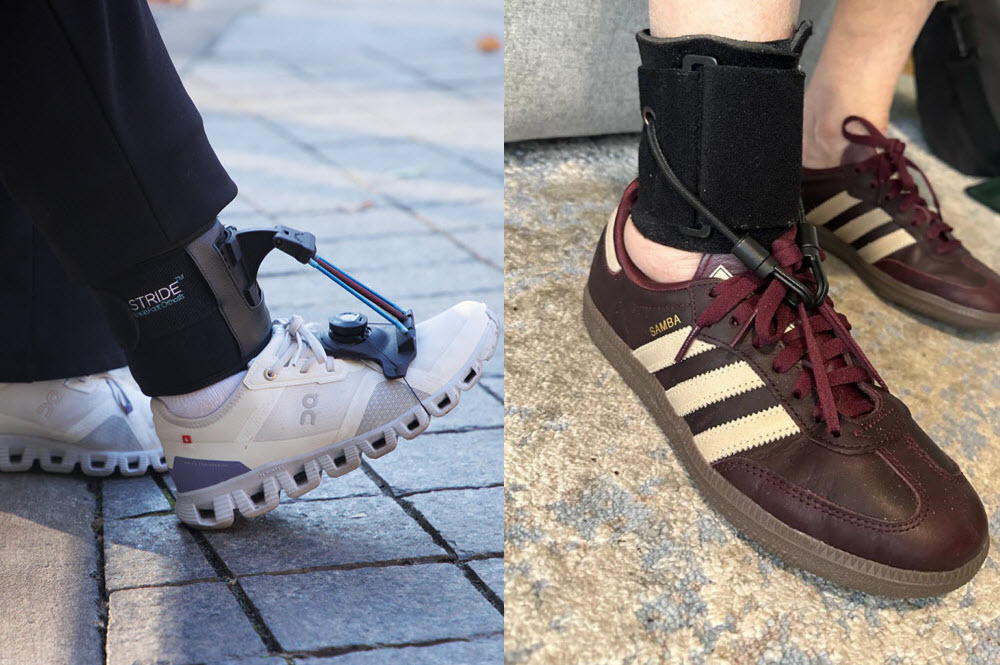
By Dr. Gene Shenker, DPT, Founder & CEO, RehabStride™ AFO
For individuals living with foot drop, walking can become a daily challenge. The inability to lift the front part of the foot during swing phase—a result of weakened dorsiflexor muscles—often leads to compensatory movements like hip hiking or toe dragging. Over time, this not only impairs mobility but can cause joint pain and fatigue.
That’s where the innovation behind the RehabStride™ AFO brace comes into focus. More than a traditional ankle-foot orthosis, it reimagines how dorsiflexion assist should work—intuitively, comfortably, and dynamically—to support natural gait patterns.
What Is Dorsiflexion and Why Does It Matter?
Dorsiflexion is the movement that allows the foot to lift upward toward the shin. It’s crucial during walking, particularly when the foot clears the ground and prepares for heel strike. Individuals with foot drop—often caused by conditions such as stroke, multiple sclerosis, spinal cord injury, or peroneal nerve damage—struggle with this motion, which can increase fall risk and reduce independence.
Traditional braces offer passive support. But passive doesn’t equal effective. For gait to feel natural and efficient, dorsiflexion must be assisted actively and adaptively—and that’s exactly what RehabStride™ delivers.
Traditional Foot Drop Braces: Where They Fall Short
Conventional foot drop braces often feature rigid plastic shells or simple elastic bands that passively hold the foot in a dorsiflexed position. While this might prevent toe dragging, it doesn’t encourage proper muscle engagement or respond to the natural mechanics of walking.
A 1998 clinical study published in PubMed compared traditional ankle-foot orthoses with a spring-assisted dorsiflexion brace. Though the mechanical support of the spring system (DACS-AFO) was promising, patients still reported discomfort with weight, noise, and bulk. The study concluded that the limitations in design ultimately outweighed the theoretical benefits.
The takeaway? Innovation alone isn’t enough—you need function, comfort, and daily practicality.

RehabStride™ AFO: Dynamic Dorsiflexion, Personalized to You
The RehabStride™ AFO brace takes dorsiflexion assist to the next level with a user-centric, biomechanically informed design. Here’s how it reinvents the experience:
1. Tension-Adjustable Dorsiflexion Control
Rather than forcing the foot into a fixed position, RehabStride™ offers precision-tuned support with an adjustable cable system. This enables users to increase or decrease dorsiflexion assistance based on daily activity, fatigue levels, or terrain—something no traditional brace can offer.
2. Torque Optimization Technology
This proprietary technology helps store and release energy throughout the gait cycle. As the user moves, the brace works with the body’s natural rhythm to facilitate push-off power and smoother transitions—without locking the foot or overcorrecting posture.
3. Support Without Rigidity
While most foot drop braces restrict movement, RehabStride™ encourages it. The system supports natural ankle flexion while still restricting unsafe or excessive motion. This balance promotes muscle activation, which can enhance functional recovery when combined with physical therapy.
More Than a Brace: A Personalized Mobility System
One of the most powerful aspects of the RehabStride™ AFO system is its adaptability—not just in mechanics, but in user experience. Every brace is supported with:
- 1-on-1 Telehealth Coaching from a licensed therapist
- Free onboarding to ensure proper setup and safe use
- Ongoing mobility support, including adjustment guidance and walking tips
As a result, patients feel more confident, informed, and empowered—not just strapped into a device.
Real-Life Impact: A Story from Maria
Maria, a stroke survivor and active grandmother, shared her experience:
“I was very fortunate to come across RehabStride™ through my physical therapist at Gramercy Physical Therapy. My first AFO was large and heavy. I tried others, but none delivered what they promised.
Unlike other AFOs that are hard to get used to, this one adapted to my needs. It’s lightweight, fits my normal shoes, and most importantly—it allows my ankle to move naturally. The tension dial gives me just the right amount of lift. I’m walking farther with less effort and more confidence than I have in years.”
Her story echoes what many of our users experience—relief, stability, and renewed freedom.
Designed for Real Life
Daily use matters. That’s why the RehabStride™ AFO includes thoughtful features such as:
- ✅ Quick Release System – Easy to put on or remove
- ✅ Universal Footwear Compatibility – Works with sneakers, casual shoes, and slip-ons
- ✅ Sleek, Low-Profile Design – Discreet enough for daily wear, flexible enough for all-day use
The Future of Foot Drop Orthotics Starts Here
Foot drop is more than a mechanical issue—it’s a personal challenge that affects confidence, independence, and safety. The solution should do more than just prevent falls. It should restore motion, support the body’s mechanics, and fit seamlessly into life.
That’s the mission behind RehabStride™ AFO—to elevate dorsiflexion assist from a passive feature to an active, dynamic component of recovery and independence.
Ready to take the next step?
Check your eligibility or speak with one of our specialists to see if the RehabStride™ AFO brace is right for you.
Author:
Dr. Gene Shenker, DPT
Founder & CEO, RehabStride™ AFO
With over two decades in physical therapy and gait rehabilitation, Dr. Shenker leads innovation in orthotic design focused on real-world outcomes for patients with neurological and musculoskeletal gait conditions.
Reference:
Yamamoto S, Ebina M, Tanaka Y, Haga N. Clinical evaluations of dorsiflexion assist controlled by spring ankle-foot orthosis for hemiplegic patients. J Rehabil Med. 1998 Jan;30(1):21–5. PMID: 9551524
